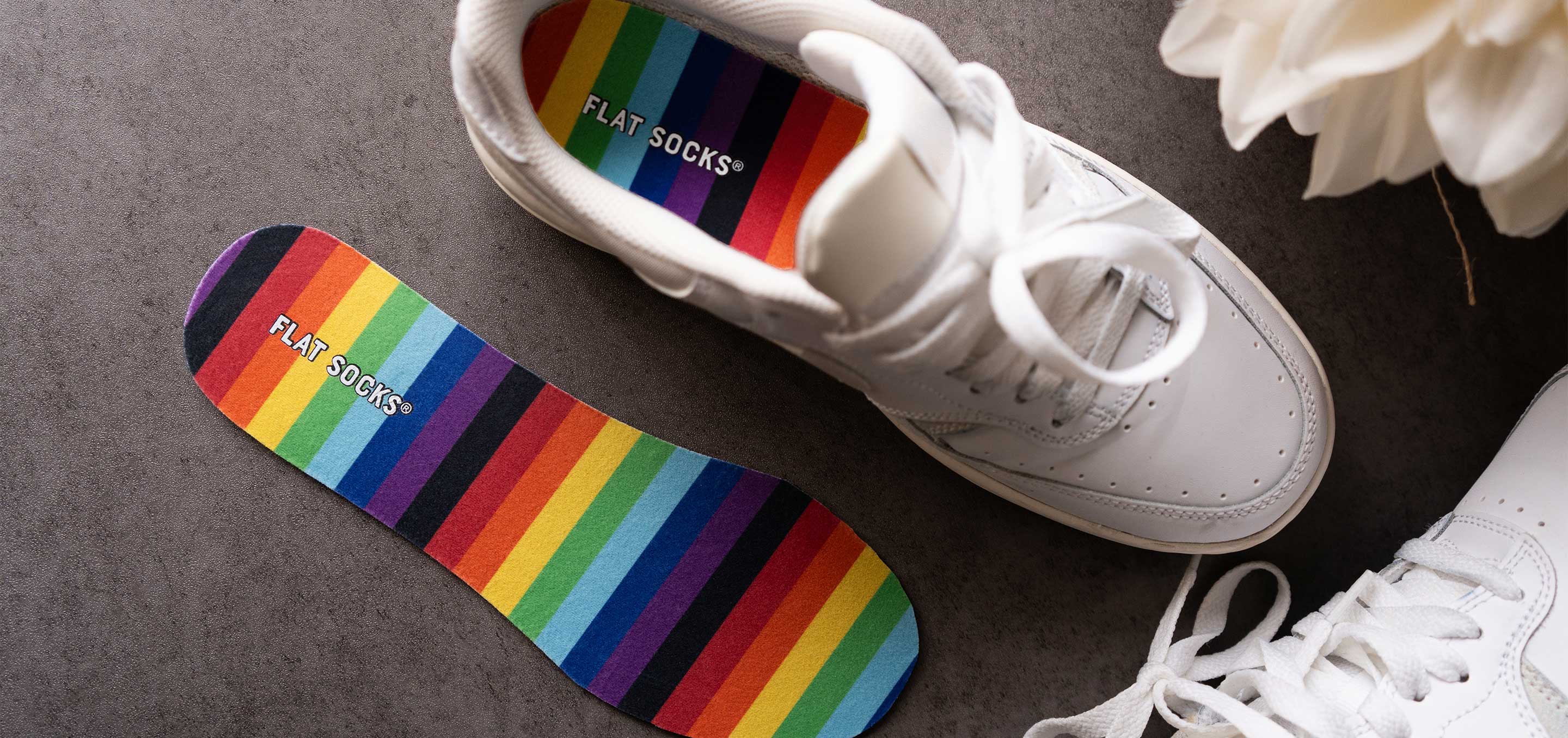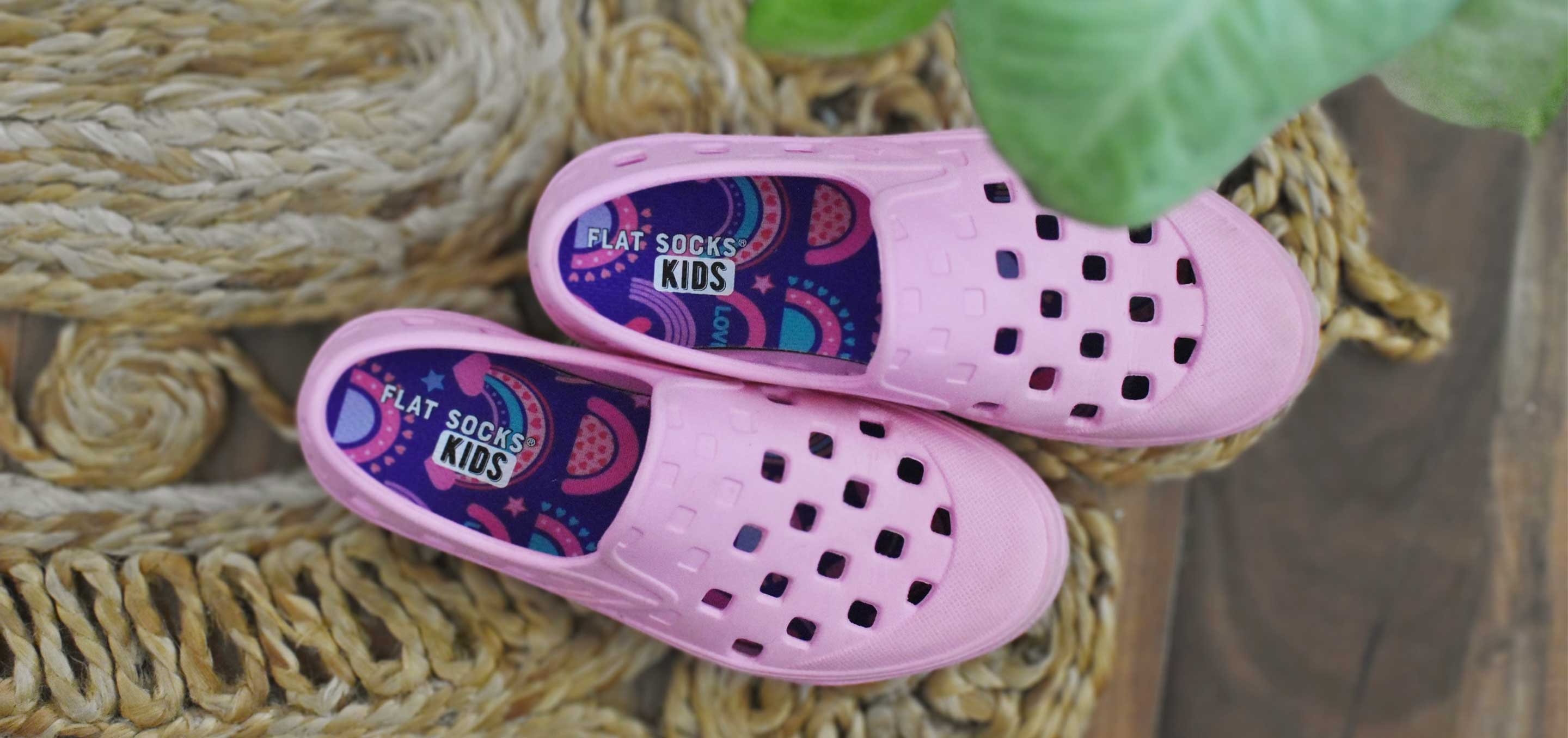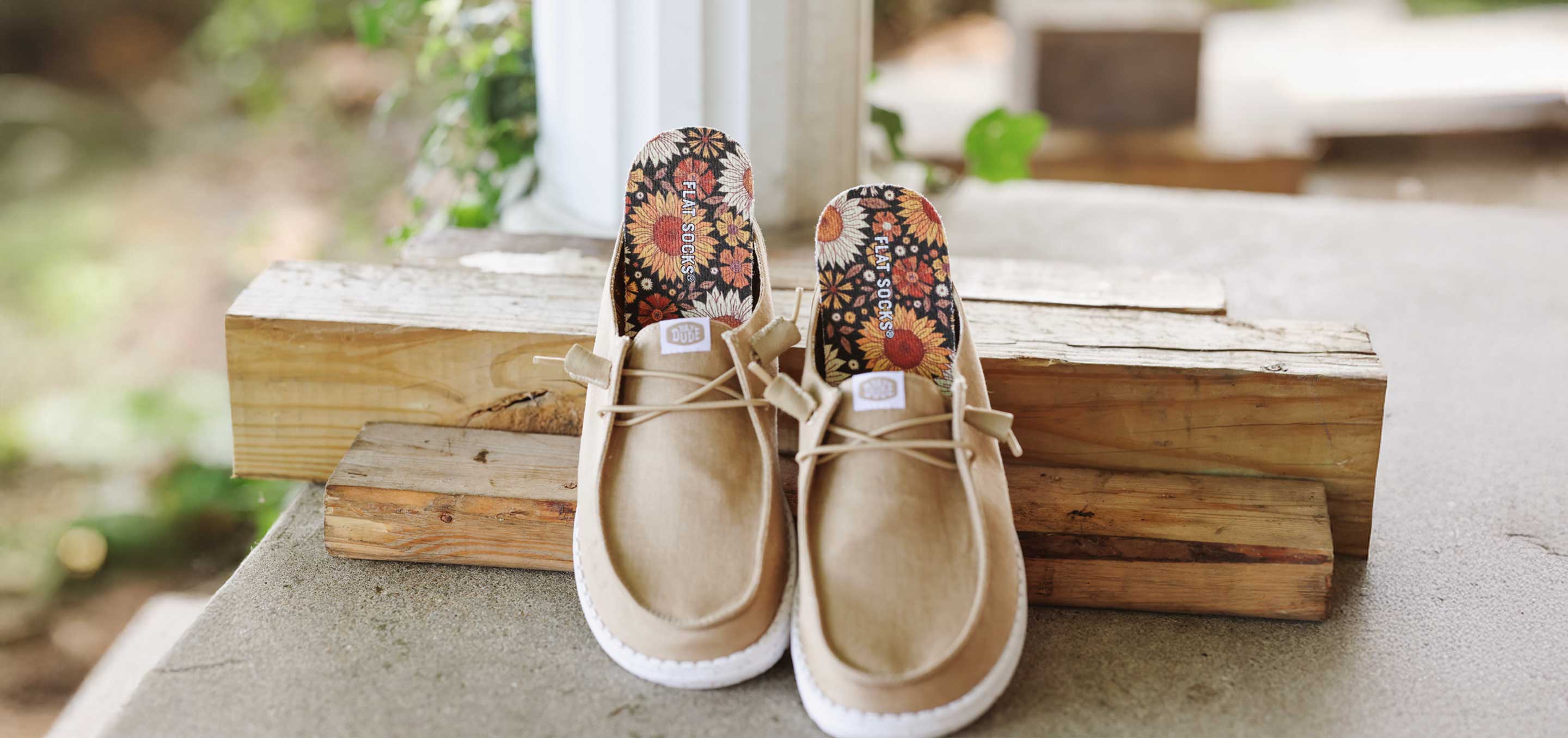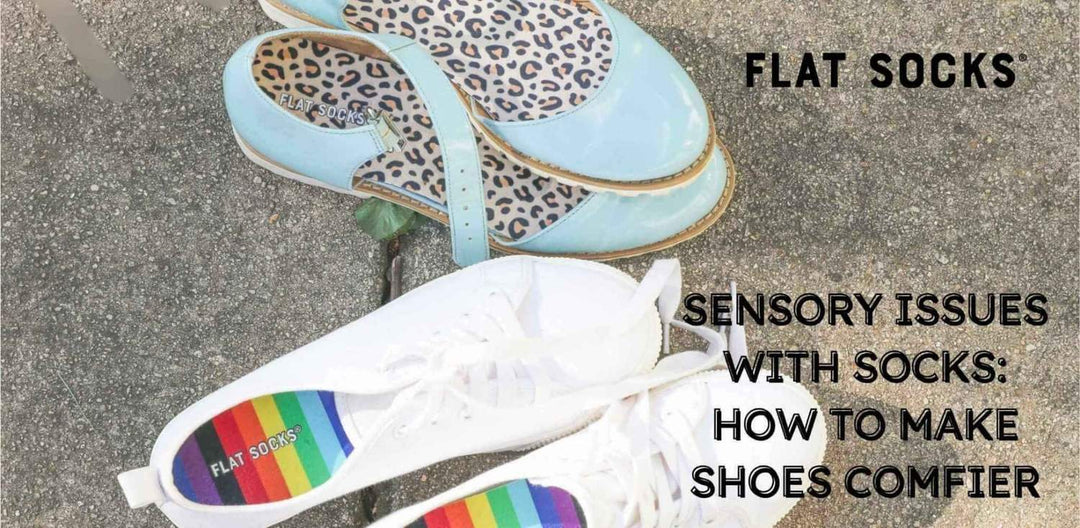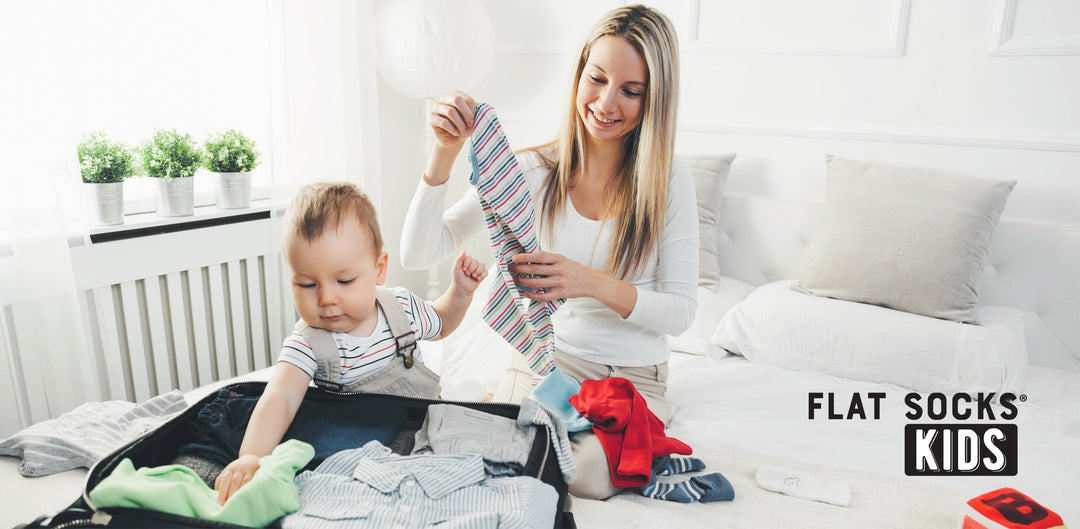Back to School with Sensory Processing Issues

Strategies & Tips for Going from Home to School
Going back to school can be an exciting time. For kids with sensory processing issues, a new school year also means unique challenges. New teachers, unfamiliar schedules, and back-to-school clothes shopping can quickly become overwhelming.
To help your child stay calm, comfortable, and focused in school, FLAT SOCKS® Kids has several tips for making the transition easier like choosing sensory friendly socks.
In This Article:
- Back to School Shopping with Sensory Processing Issues
- Smooth Transitions from Home to School
- 9 Tips for Going Back to School with Sensory Issues

Sensory Processing Issues & Back to School Shopping
The first day of school can be mentally and physically overwhelming. If your child has autism, ADHD, or sensory processing disorder, they might feel especially anxious. With their nervous system on high alert, things like annoying toe seams or clothing tags can turn their day upside down.
Too much sensory input can lead to sensory overload, which happens when the brain gets more sensory activity than it can process. This compounds back-to-school anxiety and misinterprets sensory information from clothing, triggering an emotional response.
Going shopping for back-to-school clothes and supplies has its own hurdles for parents of kids with clothing sensory issues. You must strike a balance between supporting your child’s unique needs while still getting everything on the list.
Transitioning From Home to School
Kids with sensory issues have a tough time transitioning between activities. Moving from one environment to the next and changing tasks presents new sensory information involving more than touch, smell, or taste. Other senses like proprioception, or body awareness, and vestibular, or balance, also play a significant role in transitions.
Going back to school is a major transition for kids who have sensory issues with clothing. For example, your child might have a meltdown when getting dressed for school because they refuse to wear socks. It’s crucial to approach new and predictable transitions calmly to avoid meltdowns that could make it hard for them to regulate the rest of the day.

9 Tips for Going Back to School
How you approach going back to school depends on your child, their triggers, and their unique needs. Involving your little one when making simple decisions can help them feel empowered and confident, too. Use the following tips to set your child up for a successful school year one day at a time.
- Take your time shopping for school supplies instead of going on a full shopping haul. Letting your child pick out new clothes and supplies every other trip to the store gives them time to become familiar and comfortable with how they feel.
- Avoid brand new clothes on the first day of school. Wearing familiar clothing will help a child feel more comfortable handling other challenges during the day. If your child wears a uniform, use soft layers underneath like a tagless shirt or leggings.
- Choose sensory friendly clothing like FLAT SOCKS no toe seam socks for kids. Clothes for kids with sensory issues like FLAT SOCKS Kids seamless socks with breathable, moisture-wicking materials can help prevent sensory overload.
- Let them choose what they want to wear. Kids who have a say in simple decisions are more independent and have an easier time dressing themselves. Plus, you can gain perspective on what makes them feel most comfortable.
- Use eye and ear protection like noise-canceling headphones or tinted sunglasses. Noisy hallways and bright fluorescent lights are prime causes of sensory overload for kids in school. The right tools keep them prepared.
- Build a back-to-school sensory kit with familiar trinkets like fidget toys, a stress ball, chewing gum, and a weighted lap pad. Like a sensory play bin for school, sensory kits help kids stay calm and engaged.
- Employ auditory and visual supports like checklists and timers that play enjoyable tunes to help reinforce expectations and signal clear transitions. Kids can feel accomplished checking off tasks like brushing their teeth or pulling on their shoes.
- Ask for accommodations by letting the teacher know about your child’s sensory needs ahead of time. Your child can advocate for themselves by signaling the teacher when they need a sensory break to decompress or adjust their clothes.
- Establish a routine with predictable steps your child can follow every morning. Routines help reduce anxiety and set up calm transitions. Ask the school about any late start days or teacher workdays that might inhibit that schedule.

Go Back to School with FLAT SOCKS Kids
Getting your kid ready for school is easier when you have the right tools for a successful start. FLAT SOCKS Kids are seamless sock inserts you can slip right into their shoes for a sockless hassle-free morning. With these strategies for smooth transitions and the coolest sensory friendly socks for kids, your little one can feel empowered going back to school.
References:





